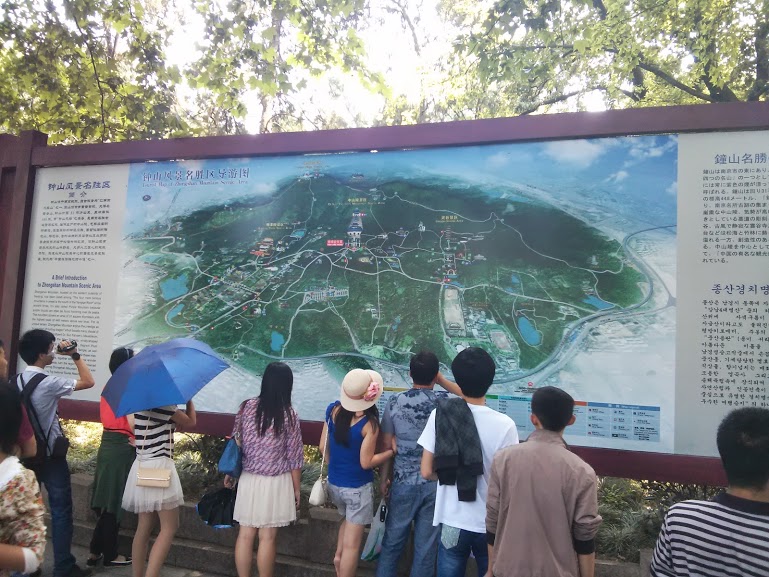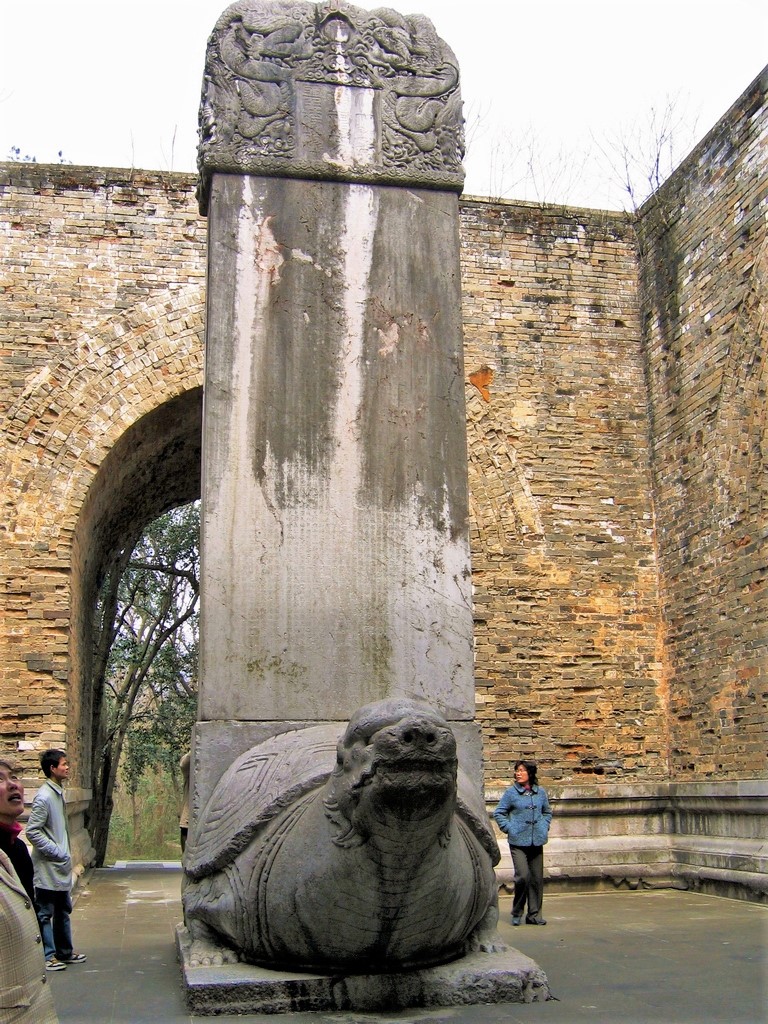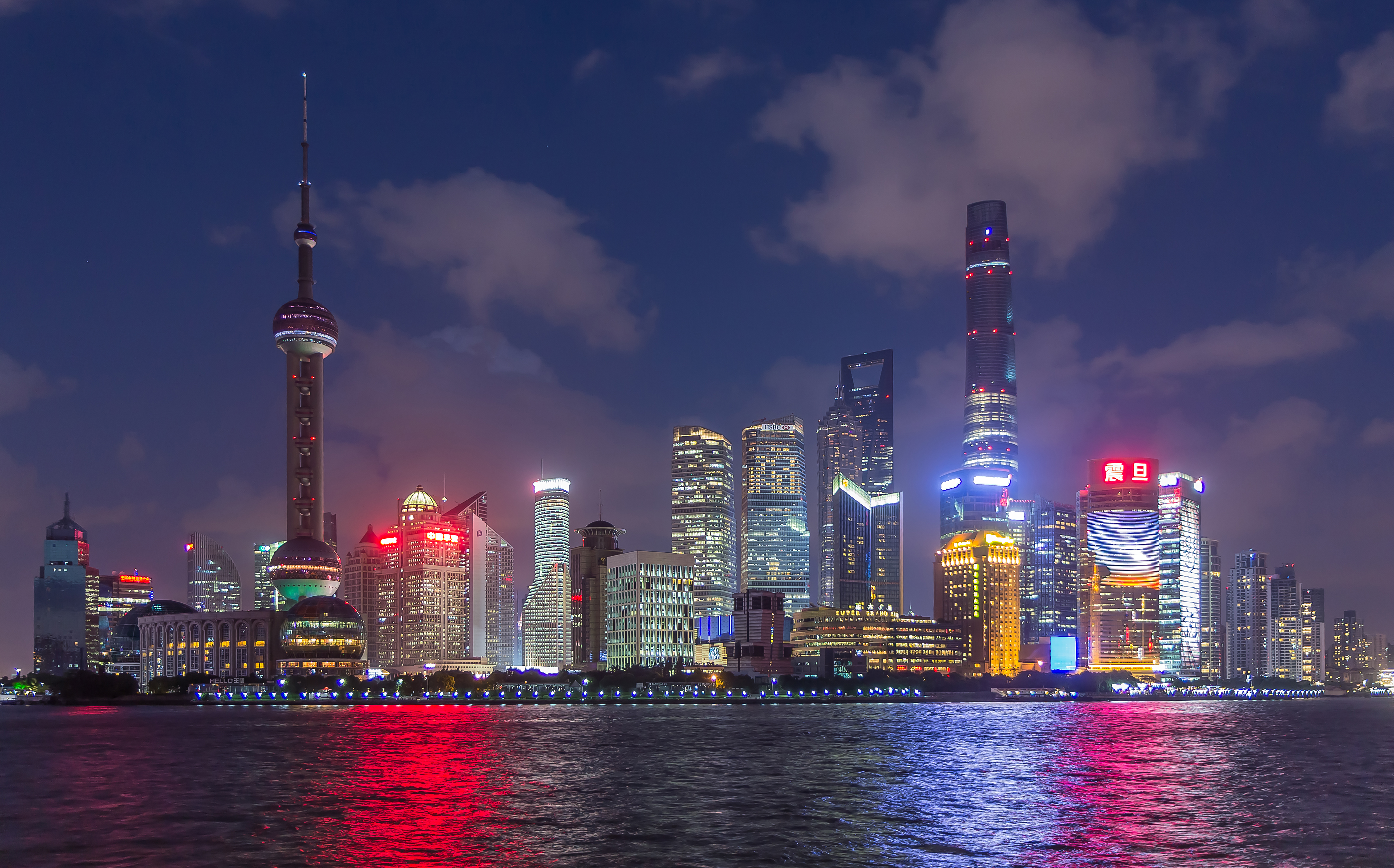|
Nanjing Underwater World
Nanjing Underwater World () is an aquarium near the Sun Yat-sen Mausoleum in Nanjing. Underwater World is on the south side of Purple Mountain within walking distance of the Ming Xiaoling Mausoleum. The aquarium is a joint venture between Andover Capital Group and the Administration Bureau of Dr. Sun Yat-Sen’s Mausoleum. History Underwater World is a joint venture between Andover Capital Group and the Nanjing government. It is run by the manager of the Sun Yat-sen Mausoleum, and opened in 1996. The aquarium covers of the and is four stories tall. The 1000 seat Dolphinarium covers an area of . The total investment was about 200,000,000 yuan. In 2004, the Aquarium and the Dolphinarium were combined into one integrated venue. Exhibits Underwater World has almost 10,000 animals representing 200 species. Ocean Tank The ocean tank at the aquarium contains and is home to more than 100 species of sea creatures. Visitors walk thorough a 180-degree transparent acrylic tunnel, ... [...More Info...] [...Related Items...] OR: [Wikipedia] [Google] [Baidu] |
Nanjing
Nanjing (; , Mandarin pronunciation: ), alternately romanized as Nanking, is the capital of Jiangsu province of the People's Republic of China. It is a sub-provincial city, a megacity, and the second largest city in the East China region. The city has 11 districts, an administrative area of , and a total recorded population of 9,314,685 . Situated in the Yangtze River Delta region, Nanjing has a prominent place in Chinese history and culture, having served as the capital of various Chinese dynasties, kingdoms and republican governments dating from the 3rd century to 1949, and has thus long been a major center of culture, education, research, politics, economy, transport networks and tourism, being the home to one of the world's largest inland ports. The city is also one of the fifteen sub-provincial cities in the People's Republic of China's administrative structure, enjoying jurisdictional and economic autonomy only slightly less than that of a province. Nanjing has be ... [...More Info...] [...Related Items...] OR: [Wikipedia] [Google] [Baidu] |
Jiangsu
Jiangsu (; ; pinyin: Jiāngsū, Postal romanization, alternatively romanized as Kiangsu or Chiangsu) is an Eastern China, eastern coastal Provinces of the People's Republic of China, province of the China, People's Republic of China. It is one of the leading provinces in finance, education, technology, and tourism, with its capital in Nanjing. Jiangsu is the List of Chinese administrative divisions by area, third smallest, but the List of Chinese administrative divisions by population, fifth most populous and the List of Chinese administrative divisions by population density, most densely populated of the 23 provinces of the People's Republic of China. Jiangsu has the highest GDP per capita of Chinese provinces and second-highest GDP of Chinese provinces, after Guangdong. Jiangsu borders Shandong in the north, Anhui to the west, and Zhejiang and Shanghai to the south. Jiangsu has a coastline of over along the Yellow Sea, and the Yangtze River passes through the southern part ... [...More Info...] [...Related Items...] OR: [Wikipedia] [Google] [Baidu] |
Public Aquarium
A public aquarium (plural: ''public aquaria'' or ''public Water Zoo'') is the aquatic counterpart of a zoo, which houses living aquatic animal and plant specimens for public viewing. Most public aquariums feature tanks larger than those kept by home aquarists, as well as smaller tanks. Since the first public aquariums were built in the mid-19th century, they have become popular and their numbers have increased. Most modern accredited aquariums stress conservation issues and educating the public.Visitor Impact accessed 3 February 2007. History [...More Info...] [...Related Items...] OR: [Wikipedia] [Google] [Baidu] |
Sun Yat-sen Mausoleum
Dr. Sun Yat-sen's Mausoleum () is situated at the foot of the second peak of Purple Mountain in Nanjing, China. Construction of the tomb started in January 1926, and was finished in spring of 1929. The architect was Lü Yanzhi, who died shortly after it was finished. His representative and project partner was his close friend Huang Tanpu. History Dr. Sun was born in Guangdong province of China on 12 November 1866, and died in 1925 in Beijing, China. On 23 April 1929, the Chinese government appointed He Yingqin to be in charge of laying Dr. Sun to rest. On 26 May, the coffin departed from Beijing, and on 28 May, it arrived in Nanjing. On 1 June 1929, Dr. Sun was buried there. Sun, considered to be the "Father of Modern China" both in mainland China and in Taiwan, fought against the imperial Qing government and after the 1911 revolution ended the monarchy, and founded the Republic of China. Selection of the design A committee decided to host a design competition in order t ... [...More Info...] [...Related Items...] OR: [Wikipedia] [Google] [Baidu] |
Purple Mountain (Nanjing)
Purple Mountain or Zijin Shan () is located on the eastern side of Nanjing in Jiangsu province, China. It is 448.2 m (1467 ft) high. Its peaks are often found enveloped in purple and golden clouds at dawn and dusk, hence its name. A small mountain with an area of about 20 square kilometers (4,900 acres), the altitude of Purple Mountain at the top and foot of the mountain is about 449 m and 20 m respectively. The annual average rainfall is 1,000 mm to 1,050 mm, and the average annual sunshine time is about 2,213 hours. Purple Mountain is a mountain related to many historical events of both ancient and modern China. It was originally known as Bell Mountain () and also became known as Mount Jiang () after Sun Quan named Jiang Ziwen, an Eastern Han official whose spirit was said to haunt the site, as the mountain's god during the Three Kingdoms era. The name ''Zijin'' () means "copper" - when copper is pure, it appears purple in color, so in Chinese, it is also c ... [...More Info...] [...Related Items...] OR: [Wikipedia] [Google] [Baidu] |
Ming Xiaoling Mausoleum
The Ming Xiaoling () is the mausoleum of the Hongwu Emperor, the founder of the Ming dynasty. It lies at the southern foot of Purple Mountain, located east of the historical centre of Nanjing. Legend says that in order to prevent robbery of the tomb, 13 identical processions of funeral troops started from 13 city gates to obscure the real burying site. Asian Historical Architecture The construction of the mausoleum began during the Hongwu Emperor's life in and ended in , during the reign of his son the Yongle Emperor, with a huge expenditure of resources involving 100,000 labourers. The original wall of the mausoleum was more than 22.5 kilometres long. The mausoleum was built under heavy guard of 5,000 troops. Layout and monuments Great golden gate and Square city Da Jin Men and Sifangcheng. One enters the site through the monumental Great Golden Gates (''Da Jin Men''), and is soon faced by a giant stone tortoise (''bixi''), which resides in the ''Sifangcheng'' ("Square city") p ... [...More Info...] [...Related Items...] OR: [Wikipedia] [Google] [Baidu] |
Acrylic Glass
Poly(methyl methacrylate) (PMMA) belongs to a group of materials called engineering plastics. It is a transparent thermoplastic. PMMA is also known as acrylic, acrylic glass, as well as by the trade names and brands Crylux, Plexiglas, Acrylite, Astariglas, Lucite, Perclax, and Perspex, among several others ( see below). This plastic is often used in sheet form as a lightweight or shatter-resistant alternative to glass. It can also be used as a casting resin, in inks and coatings, and for many other purposes. Although not a type of familiar silica-based glass, the substance, like many thermoplastics, is often technically classified as a type of glass, in that it is a non-crystalline vitreous substance—hence its occasional historic designation as ''acrylic glass''. Chemically, it is the synthetic polymer of methyl methacrylate. It was developed in 1928 in several different laboratories by many chemists, such as William Chalmers, Otto Röhm, and Walter Bauer, and first brought ... [...More Info...] [...Related Items...] OR: [Wikipedia] [Google] [Baidu] |
List Of Tourist Attractions In China
Tourism in China is a growing industry that is becoming a significant part of the Chinese economy. The rate of tourism has expanded over the last few decades since the beginning of reform and opening-up. The emergence of a newly rich middle class and an easing of restrictions on movement by the Chinese authorities are both fueling this travel boom. China has become one of world's largest outbound tourist markets. According to Euromonitor International, economic growth and higher incomes in nearby Asian countries will help China to become the world's number one tourist destination by 2030. China ranked second in the world for travel and tourism's contribution to GDP in 2022 ($814.1 billion), and first in the world for travel and tourism's contribution to employment (66,086,000 jobs in 2014). Tourism, based on direct, indirect, and induced impact, accounted for 9.3 percent of China's GDP in 2013. In 2017, the total contributions of China's Travel and Tourism sector made up 11% of ... [...More Info...] [...Related Items...] OR: [Wikipedia] [Google] [Baidu] |
Buildings And Structures In Nanjing
A building, or edifice, is an enclosed structure with a roof and walls standing more or less permanently in one place, such as a house or factory (although there's also portable buildings). Buildings come in a variety of sizes, shapes, and functions, and have been adapted throughout history for a wide number of factors, from building materials available, to weather conditions, land prices, ground conditions, specific uses, prestige, and aesthetic reasons. To better understand the term ''building'' compare the list of nonbuilding structures. Buildings serve several societal needs – primarily as shelter from weather, security, living space, privacy, to store belongings, and to comfortably live and work. A building as a shelter represents a physical division of the human habitat (a place of comfort and safety) and the ''outside'' (a place that at times may be harsh and harmful). Ever since the first cave paintings, buildings have also become objects or canvasses of much artistic ... [...More Info...] [...Related Items...] OR: [Wikipedia] [Google] [Baidu] |
Tourist Attractions In Nanjing
Tourism is travel for pleasure or business; also the theory and practice of touring (other), touring, the business of attracting, accommodating, and entertaining tourists, and the business of operating tour (other), tours. The World Tourism Organization defines tourism more generally, in terms which go "beyond the common perception of tourism as being limited to holiday activity only", as people "travelling to and staying in places outside their usual environment for not more than one consecutive year for leisure and not less than 24 hours, business and other purposes". Tourism can be Domestic tourism, domestic (within the traveller's own country) or International tourism, international, and international tourism has both incoming and outgoing implications on a country's balance of payments. Tourism numbers declined as a result of a strong economic slowdown (the late-2000s recession) between the second half of 2008 and the end of 2009, and in consequence of t ... [...More Info...] [...Related Items...] OR: [Wikipedia] [Google] [Baidu] |
Aquaria In China
{{disambiguation ...
Aquaria is the plural of aquarium. Aquaria may also refer to: * Aquaria KLCC, an oceanarium in Kuala Lumpur, Malaysia * ''Aquaria'' (video game), released in 2007 * Aquaria (drag queen), stage name of Giovanni Palandrani * ''Aquaria'' (album), a 2015 album by Boots * ''Aquaria'' (album), a 2022 album by Doda See also * List of aquaria This is a list of aquaria (public aquariums). For dolphinariums, see List of dolphinariums. For zoos, see List of zoos. For a list of defunct zoos and aquariums, see List of former zoos and aquariums. Aquariums are facilities where animals are ... [...More Info...] [...Related Items...] OR: [Wikipedia] [Google] [Baidu] |







